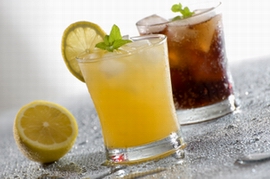 sense of a stabilized economy pushed the beverage alcohol industry in a positive direction in 2012. Consumers were more confident, and sales were trending upward for the on- and off-premise. However, by the third quarter, talks of fiscal cliffs and tax increases began to seep into the minds of consumers, and sales began to fall. Thankfully, the gains seen in the beginning of the year out-weighed the end of the year losses. The entire beverage alcohol industry grew 3.1% in retail dollars to $197.8 billion, the largest increase since the recession hit.
sense of a stabilized economy pushed the beverage alcohol industry in a positive direction in 2012. Consumers were more confident, and sales were trending upward for the on- and off-premise. However, by the third quarter, talks of fiscal cliffs and tax increases began to seep into the minds of consumers, and sales began to fall. Thankfully, the gains seen in the beginning of the year out-weighed the end of the year losses. The entire beverage alcohol industry grew 3.1% in retail dollars to $197.8 billion, the largest increase since the recession hit.According to The Beverage Information Group's Handbook Advance 2013, Distilled Spirits increased for the 15th consecutive year, growing slightly faster than in 2011. The 3.6% overall increase is the largest gain since 2006. New products and the modernization of spirits advertising contributed to the growth, as all major television networks and many cable networks allowed spirits advertising.
Wine consumption also increased, and its 1.9% gain positioned the U.S. to surpass France as the world's largest wine market. Domestic wine consumption increased by 3.0%, surpassing imported brands. Champagne and Sparkling Wine increased, but the Dessert/Fortified and Vermouth/Aperitif categories declined.
The beer industry posted its first increase in volume since 2008 to bring the industry to 2.8 billion 2.25-gallon cases. The small 0.5% growth rate has created excitement for suppliers and brands vying for consumers' share of occasion. Imports, Super-Premium and Craft segments contributed to the success.
"Ciders, much like the Craft segment, have been appealing to consumers because of their variety," says Adam Rogers, senior research analyst for the Beverage Information Group, based in Norwalk, Conn. "This is why the category has performed well over the past few years, and will continue to do so."







